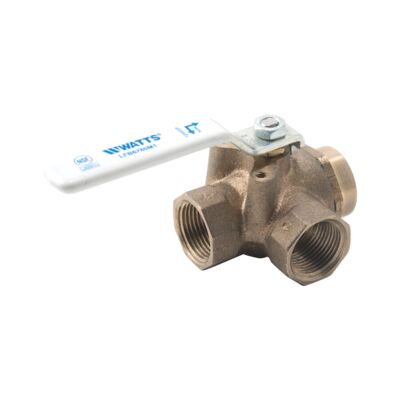Understanding Ball Valves: Types, End Connections, and Materials


Ball valves are one of the most widely used valve types in industrial piping systems due to their simple operation, tight sealing, and long service life. They are designed to control flow by rotating a spherical ball with a bore through it, allowing full or partial flow when aligned with the pipe.
While the basic principle is the same, ball valves come in different designs, end connections, and materials, each suited to specific applications.
Types of Ball Valves
Ball valves can be categorized by bore design, body construction, and seating type.
1. Bore Design
-
Full Port (Full Bore) – The ball bore matches the pipe ID, minimizing pressure drop and allowing pigging. Ideal for process lines where flow efficiency is critical.
-
Reduced Port (Standard Bore) – The bore is smaller than the pipe ID, reducing cost but causing some flow restriction.
-
V-Port – The bore is V-shaped, allowing for better control in throttling applications.
2. Body Construction
-
One-Piece Body – Simplest, lowest cost, fewer leak points, but non-serviceable.
-
Two-Piece Body – It some cases can be disassembled for maintenance on one end; widely used in industrial service.
-
Three-Piece Body – Allows full maintenance without removing the valve from the line; preferred in process industries.
- Union End - Allows full maintenance without removing the valve from the line; primarily in plastics, but also made in Brass, Carbon Steel, and Stainless Steel
3. Seating Type
-
Soft-Seated – Seats made from PTFE, RPTFE, or similar materials; offer tight shutoff but are limited to moderate temperatures.
-
Metal-Seated – Seats made from hardened metals; suitable for high-temperature and abrasive service.
End Connection Types for Ball Valves
Ball valves are available with multiple end connections to suit different piping systems:
-
Threaded (NPT or BSP)
-
Common in smaller sizes (1/4” to 4”)
-
Quick installation without welding
-
Used in low- to medium-pressure applications
-
-
Flanged (ASME B16.5)
-
Easy removal and replacement
-
Available in Class 150, 300, and higher
-
Ideal for larger diameters and higher pressures
-
-
Socket Weld
-
For permanent, high-strength connections
-
Common in high-pressure, small-diameter piping
-
-
Butt Weld
-
Fully welded to the pipeline for a leak-proof, high-strength joint
-
Used in high-pressure, high-temperature systems
-
-
Press-Fit
-
Uses mechanical pressing for fast, flame-free installation
-
Common in commercial and light industrial applications
-
-
Grooved
-
Uses a grooved coupling system for quick installation and removal
-
Often found in fire protection and HVAC systems
-
Common Materials for Ball Valves
Choosing the right material ensures corrosion resistance, mechanical strength, and cost-effectiveness.
1. Carbon Steel
-
Cost-effective, high-strength
-
Suitable for non-corrosive fluids, steam, and oil & gas
-
Common grades: ASTM A105, A216 WCB
2. Stainless Steel
-
Excellent corrosion resistance
-
Suitable for chemical, food, and marine environments
-
Common grades: 304/304L, 316/316L, duplex stainless steels
3. Brass & Bronze - Regular and Lead Free
-
Good corrosion resistance in potable water
-
Lower cost, common in plumbing and low-pressure systems
4. Alloy Steels
-
Designed for high-temperature and high-pressure services
-
Used in power generation and refinery piping
5. High-Nickel Alloys
-
Excellent resistance to acids, chlorides, and seawater
-
Common alloys: Monel®, Inconel®, Hastelloy®
6. Plastic (PVC, CPVC, PVDF, PTFE)
-
Lightweight and corrosion-proof
-
Common in chemical handling and water treatment
Applications
Ball valves are found across industries, including:
-
Oil & Gas
-
Chemical Processing
-
Water & Wastewater
-
Food & Beverage
-
Power Generation
-
Marine & Offshore
-
Fire Protection
Conclusion
Ball valves are versatile, reliable, and available in configurations to match virtually any piping requirement. Understanding the different types, end connections, and materials helps ensure the right choice for performance, safety, and cost-efficiency.
Hayward Pipe & Supply stocks a wide range of carbon steel, stainless steel, alloy, and plastic ball valves with multiple end connections—meeting ASME, API, and MSS specifications.

